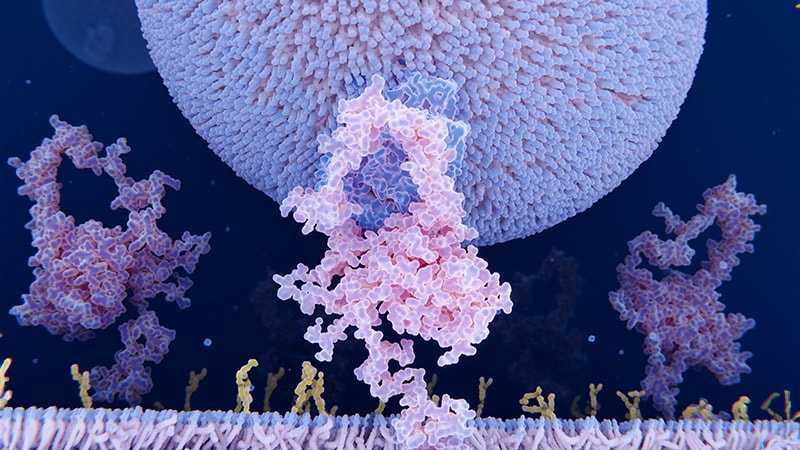Initiating Inclisiran Early Leads to Significantly Better Long-Term LDL Reduction Compared to Usual Care in Patients with Atherosclerotic Cardiovascular Disease
Core Concepts
Initiating the cholesterol-lowering drug inclisiran earlier in the treatment pathway leads to significantly better long-term low-density lipoprotein (LDL) reduction compared to usual care in patients with atherosclerotic cardiovascular disease (ASCVD).
Abstract
The study, known as VICTORION-INITIATE, compared an "inclisiran first" strategy, where inclisiran was added immediately if patients failed to reach LDL-C < 70 mg/dL despite receiving maximally tolerated statins, to usual care in 450 patients with ASCVD.
The key findings are:
At day 330, the mean change in LDL from baseline was -60.0% with the inclisiran first strategy compared to -7.0% with usual care (p<0.001).
A significantly greater proportion of patients in the inclisiran first arm achieved LDL goals of < 70 mg/dL (81.8% vs 22.2%) or < 55 mg/dL (71.6% vs 8.9%) compared to the usual care arm.
Only 12.6% of patients in the usual care group received statins in combination with other lipid-lowering therapies, and only 2.5% received a PCSK9 monoclonal antibody without concomitant statins.
The study was designed to represent real-world US clinical practice, and the lack of lipid therapy use and intensification in the usual care arm may reflect an inadequately resourced population with limited access to non-statin therapies.
The authors conclude that the results demonstrate the clinical value of initiating inclisiran earlier in the treatment pathway and highlight the urgent need to improve usual care for US patients with ASCVD.
Earlier Inclisiran Gives Better Long-Term LDL Reductions
Stats
At day 330, the mean change in LDL from baseline was -60.0% with the inclisiran first strategy compared to -7.0% with usual care (p<0.001).
At day 330, 81.8% of patients in the inclisiran first arm achieved LDL goals of < 70 mg/dL, compared to 22.2% in the usual care arm.
At day 330, 71.6% of patients in the inclisiran first arm achieved LDL goals of < 55 mg/dL, compared to 8.9% in the usual care arm.
Only 12.6% of patients in the usual care group received statins in combination with other lipid-lowering therapies, and only 2.5% received a PCSK9 monoclonal antibody without concomitant statins.
Quotes
"Results from demonstrate the clinical value of initiating inclisiran earlier in the treatment pathway and highlight the urgent need to improve usual care for US patients with ASCVD."
"We are excited to have this new approach available, which is currently very underutilized but can have such an important impact."
"We need to do a better job as clinical cardiologists in explaining to patients the urgency of getting their LDL down to target levels."
Key Insights Distilled From
by at www.medscape.com 04-17-2024
https://www.medscape.com/viewarticle/earlier-inclisiran-gives-better-long-term-ldl-reductions-2024a10007d6
Deeper Inquiries
What are the potential barriers to wider adoption of inclisiran in the treatment of ASCVD patients, and how can they be addressed?
One potential barrier to the wider adoption of inclisiran in the treatment of ASCVD patients is the inertia in clinical practice, where healthcare providers may be resistant to change or may not be aware of the benefits of inclisiran. This can be addressed through targeted educational programs and awareness campaigns to inform healthcare providers about the efficacy and safety of inclisiran in reducing LDL levels. Additionally, cost considerations and insurance coverage may pose barriers to adoption. Working with healthcare systems and insurers to negotiate favorable pricing and coverage for inclisiran can help overcome this barrier. Patient awareness and acceptance of inclisiran as a treatment option are also crucial. Providing clear information to patients about the benefits of inclisiran and involving them in shared decision-making processes can help increase acceptance and adherence to treatment.
What are the potential long-term cardiovascular outcomes associated with the improved LDL reduction seen with the inclisiran first strategy compared to usual care?
The improved LDL reduction seen with the inclisiran first strategy compared to usual care in ASCVD patients can have significant long-term cardiovascular outcomes. Lowering LDL levels, especially to target levels of < 55 mg/dL or < 70 mg/dL, as recommended by guidelines, can lead to a reduction in the progression of atherosclerosis, decreased risk of cardiovascular events such as heart attacks and strokes, and overall improved cardiovascular outcomes. By achieving and maintaining optimal LDL levels with inclisiran, patients may experience a lower incidence of cardiovascular events, reduced need for invasive procedures like stenting or bypass surgery, and potentially a longer and healthier life. The long-term benefits of improved LDL reduction with inclisiran can translate into better quality of life and reduced healthcare costs associated with managing cardiovascular complications.
How can the findings of this study be used to inform the development of more effective strategies for the management of lipid disorders in high-risk patient populations?
The findings of this study highlight the importance of early initiation of intensive LDL-lowering therapy, such as inclisiran, in high-risk patient populations with ASCVD. To develop more effective strategies for the management of lipid disorders in these populations, healthcare providers can consider implementing a proactive approach to lipid management, starting with the identification of high-risk patients and early intervention with potent LDL-lowering agents like inclisiran. Education and awareness programs for both healthcare providers and patients can help increase understanding of the benefits of intensive LDL reduction and the importance of achieving target LDL levels. Additionally, integrating inclisiran into treatment guidelines and protocols for ASCVD management can standardize care and ensure more consistent and optimal lipid control in high-risk patient populations. Collaborative efforts between healthcare systems, insurers, and pharmaceutical companies can also help streamline access to and affordability of novel lipid-lowering therapies like inclisiran for high-risk patients.
0
